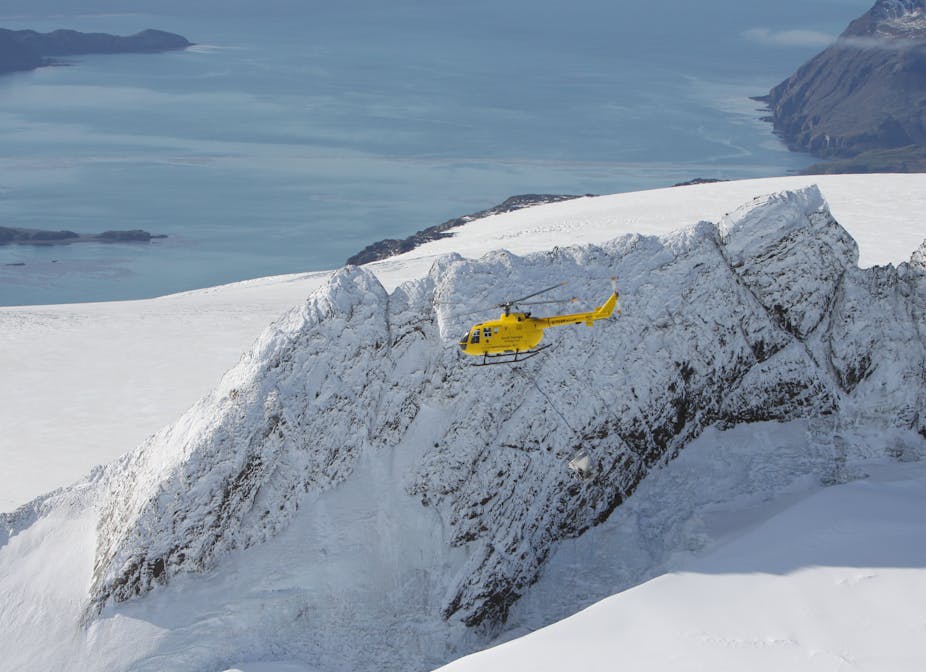Across the world, the damage caused by invasive alien species is second only to habitat destruction by humans in reducing the planet’s biodiversity. Their effect is especially potent on islands. Cats, rats, weasels and stoats wreak havoc on native animals which evolved in the absence of predatory mammals.
When Captain Cook discovered in 1775 a large glacier-riven island in the sub-Antarctic, he named it South Georgia after King George III and moved on, desperately disappointed that it wasn’t part of the fabled southern continent.
But news of the extraordinary abundance of seals on South Georgia’s beaches soon brought wooden ships bearing sealers and their stowaways - rats and mice - to the island, and they were not disappointed. While the sealers reaped more than a million seal pelts, the rodents began devouring what was possibly the greatest concentration of seabirds in the world. Two centuries later, the sealers and the whale-hunters that followed them have long since departed, and the seal and whale populations are well on the road to recovery.
But their legacy lives on. Rats and mice have spread to almost every habitable part of the island. Though South Georgia is famous for its wildlife, few visitors today realise that it is but a shadow of what it was before man’s arrival. What should be the most abundant birds - the many species of burrow-nesting prions, storm-petrels and diving petrels - are essentially restricted to small offshore islands by the abundance of rodents. Similarly the endemic South Georgia pipit, the world’s most southerly songbird, is clinging to survival, unable to rear young in the presence of predators.

The South Georgia Heritage Trust (SGHT), a small UK charity with no previous experience of island eradications, nevertheless took on the task of ridding this remote, 170km-long, mountainous island of rodents.
The potential solution resided in techniques pioneered in New Zealand, where helicopters have been used to spread toxin-laced bait pellets to eradicate pests over ever-larger islands for many years, usually with finance and expertise provided by government. But South Georgia is ten times larger than any island tackled before, more remote, and with notoriously ferocious weather.
While SGHT had neither money nor expertise for the job ahead, an aspect of the remote islands that worked in their favour was that South Georgia’s rat-proof glaciers divided the island into smaller and more manageable chunks, allowing the problem to be solved piece-by-piece over several years. But those glaciers are retreating rapidly. This would be a race against time.

After buying two sturdy veteran ex-air ambulance helicopters and sending them the length of the Atlantic, SGHT mounted a trial operation in 2011. This treated 128 sq km of South Georgia - just 12.5% of the rodent-inhabited land on the island, but equal to the largest area ever tackled for rodent eradication worldwide. The rats disappeared within a week, and within three weeks some of the native wildlife was already showing symptoms of recovery. Two years later, there are still no signs of rats there.
From this apparent early success, the Trust has just completed the second year of fieldwork on South Georgia. This time, a team of 25 and three helicopters treated 580 sq km of land with 180 tonnes of pelleted bait. Four abandoned whaling stations - prime habitat for rats - were baited by hand, room by decaying, collapsing room. Delayed by the worst weather in a decade, the team faced an ignominious retreat brought on by deep winter snows. But luck rewarded patience, and the last bag of bait was spread on the westernmost tip of the island in frigid temperatures on May 18th.
Ahead lies intensive monitoring to discover if every single rodent has disappeared (killing 99.999% is not enough, even a single surviving mating pair represents failure), and then a final season of fieldwork in 2015. A third of the island has still to be treated. If successful, tens of millions of seabirds should eventually return to their ancestral home, and two centuries of human-induced damage will have been reversed in just a few years. A small British charity will have brought about a conservation miracle of global importance. It’s an intoxicating prospect.

Some may question spending millions of pounds and risking life and limb to kill rodents on a remote island whose very existence will have escaped most people. To them, the answer must be “because we can”. The planet will not stop turning if the South Georgia pintail or pipit become extinct, but the thousands of people who have jointly funded this project, and those organising and doing the fieldwork, believe it will be a poorer place if the pipit’s song is extinguished forever.
South Georgia is an overseas territory of the UK, and as such is our responsibility. When restored, it will be our finest wildlife spectacle by far. The impact of this project should last for millennia and will be an inspiration for others around the world to follow. As conservation legacies go, it doesn’t get much better than that.


